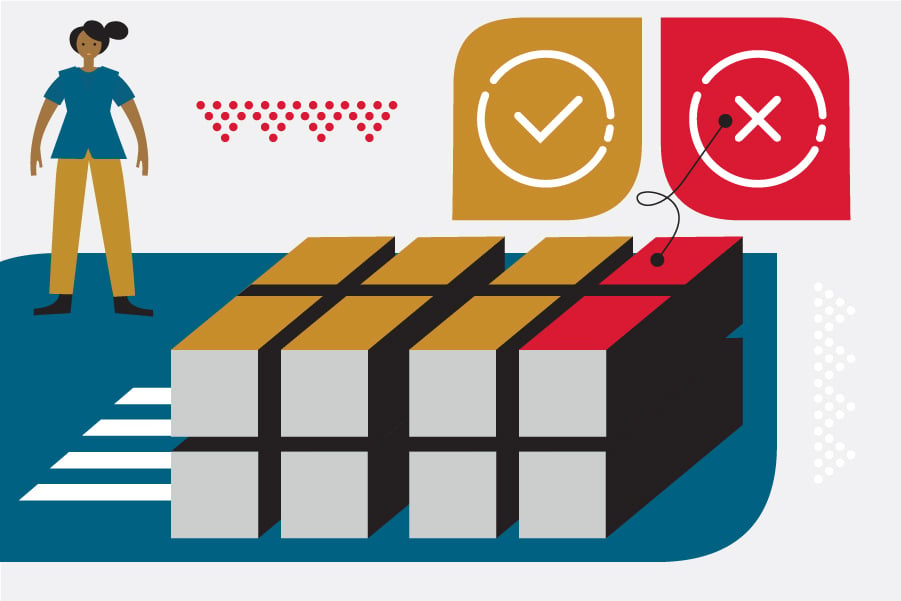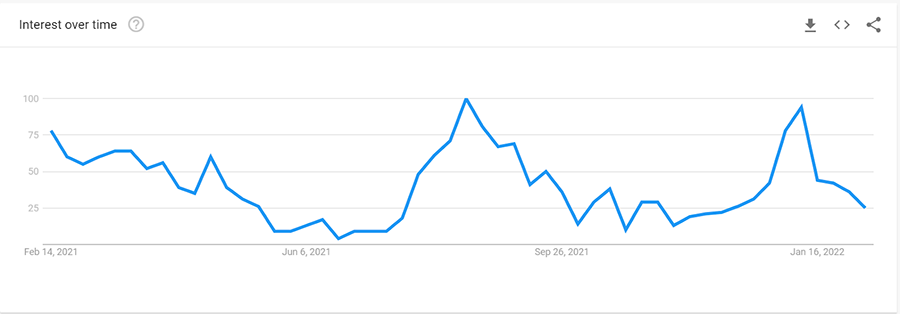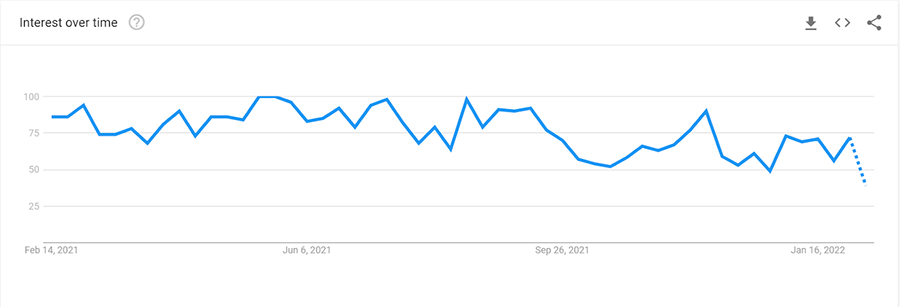Logistics
Industries
Technology & Innovations
E-commerce
E-commerce Fulfillment Services
Lease & Maintenance
Semi Trucks
Logistics
E-commerce
Lease & Maintenance
Buy Used Trucks

With the rise of social media platforms, user-friendly technology, and the widely-adopted work-from-anywhere mindset, dropshipping has become a large player in the entrepreneurial space - and budding ecommerce merchants everywhere want a piece of it.
Because of this, dropshipping is often miscategorized as a get-rich-quick scheme, where influencers on platforms like TikTok and YouTube boast about working just a few hours per day while raking in the cash as dropshippers.
While dropshipping certainly offers digitally-native retailers a smooth and fast entry into the online marketplace, it takes plenty of dedication, time, and financial investment - just like any other business model.
So, why is dropshipping considered much easier than traditional in-house fulfillment? It essentially cuts out logistics management woes.
How? Let’s dive in.
Dropshipping is an ecommerce order fulfillment strategy where an online merchant doesn’t store or manage proprietary inventory. Instead, they’re simply selling another supplier’s products, and that supplier or manufacturer is responsible for fulfilling and shipping orders on the merchant’s behalf.
In the most basic sense, dropshipping brands are middlemen who seek out suppliers creating popular products and market these products on their own ecommerce websites.
The goal? Selling to the end consumer.
Dropshipping is a straightforward business because it cuts out logistics management complexities that direct-to-consumer retailers manufacturing, supplying, and distributing their own products have to deal with on a daily basis.
Without having to worry about product inventory, labor management, dock-to-stock service levels, and more - the only aspect a merchant utilizing a dropshipping model needs to worry about is facilitating actual sales. Meaning, dropshippers have the bandwidth to differentiate their brand from others with smart marketing, customer nurturing, and expanding their reach.
Dropshipping is growing popular among aspiring entrepreneurs who want to jump in, test different business ideas, and gain traction as newbies in the ecommerce space.
In fact, the value of the dropshipping market is expected to grow to 476.1 billion US dollars by 2026.
Plus, it comes with plenty of advantages that aren’t readily available within more traditional business models:
Low overheads. Because there’s no inventory to purchase, warehouse to manage, or insurance to pay for, the overhead expenses are quite low. It’s typical for dropshipping brands to run smoothly with only a laptop and a few recurring expenses based on marketing and overall business strategy.
Simple to get started. Not having to deal with physical products is a gamechanger for ecommerce brands. You no longer have to deal with restocking and tracking inventory, the process of packing and shipping orders, or maintaining warehouse labor. It’s just your website, your sales, and your customers that need attention. This leaves plenty of room for distinguishing your brand as an authority in a saturated marketplace.
Easy to scale. With an in-house fulfillment model, if your orders peak to double their usual amount, your brand will see double the workload. By leveraging dropshipping, the additional volume and workload will be taken on by suppliers instead of your brand, leaving ample room for growth without having to put out shipping and fulfillment-related fires.
With so many lower prices and fewer complexities, dropshipping seems like a win-win for an ecommerce business. However, it’s critical to note there are plenty of pain points when it comes to implementing a successful dropshipping model.
In fact, the positives of dropshipping can actually work against your brand.
The ease of getting started and little overhead costs has turned dropshipping into a sort of a viral online business model. There’s a ton of competition.
Standing out from the crowd is not only difficult to do, but it also takes time, dedication, and hours of research… wiping away the “get rich quick” misnomer that dropshipping has developed over the past few years.
To have a successful dropshipping business, you’ll need to take the time to research your target market. Picking a popular product may only take a few days of tracking trends and researching suppliers, but once you begin to sell, you’ll need to have enough insight into your potential customers to be able to engage with them, create trust, and develop long-lasting brand loyalty.
Fake sites, phishing schemes, and hundreds of ways to get taken advantage of online have put consumers on high alert, looking for brands that they can determine as trustworthy and genuine. Without trust, it will be very difficult to get digital-savvy consumers to buy from your site.
Choosing the right niche is imperative in dropshipping. Your niche will help you develop your audience, strategize your marketing efforts, and choose the proper dropshipping products for your ideal clients.
But, it’s tricky to know what’s best for your brand before you even get started. In hopes of quick and easy money, it can be tempting to pick whatever’s most popular to focus on. But this method leaves your brand at the hands of consumer trends… which tend to be volatile.
Choosing the wrong niche can lead to valuable time spent on marketing efforts like advertisements, content, and site optimization - with no rewards.
Think about selling into an evergreen niche, rather than the most popular ones.
An evergreen niche means the products within will be relevant for quite some time instead of spiking (and tanking) with the trends. For dropshipping businesses, it’s smart to work with products in niches that are stable, so your source of income is guaranteed over a long period of time.
A study by Shopify found health and personal care, wardrobe and accessories, and home and bedroom to be some of the most popular niches of 2021. Within these niches, try to avoid products that are more volatile, meaning there’s boosted interest every so often but a higher chance of falling off.
You can begin to understand a product’s lifecycle popularity by utilizing Google Trends to compare and contrast. For example, yoga mats are trending at a much more stable rate than cloth masks, which tend to spike and drop off every so often.
Yoga mats via Google Trends:

Cloth face masks via Google Trends:

Ah, customer experience. Consumers are looking for streamlined buying journeys, easy-to-navigate web pages, and top-tier customer service - with a nice bow on top to tie it all together. A poor user experience is not part of the equation when it comes to a happy customer.
While it’s relatively easy to create your own online store, it doesn’t mean you should be speeding through the process. 38% of consumers will stop engaging with a site if they find the layout and content unattractive.
Creating a website without the proper research and expertise will leave your potential customers with a negative taste in their mouths - especially if your site isn’t meeting their expectations.
Clean up your site structure. If your customer is smacked with too many pop-ups when they first get to your homepage, they’re more likely to abandon ship. Similarly, too many clicks to get to your products will frustrate users. Try to keep everything on your site three clicks or less away from your homepage.
Optimize your images. If your content takes too long to load, your customers will leave your site. Make sure your images are compressed so that they load efficiently - but don’t forget to keep them at a resolution that still looks clean and professional.
Customers rarely find ecommerce brands by chance. A successful dropshipping business depends on visibility. If you don’t have a clear and cohesive marketing strategy, your brand reach will be disjointed, and you’ll miss out on consumers who are actually interested in your products.
Improve your SEO. While advertisements can help get your foot into an audience’s door, developing your Search Engine Optimization (SEO) tactics will only help establish your brand as an authority and rank higher on search engine result pages (SERPs). Start by researching relevant keywords for your niche and include them in your headers, meta description, and product descriptions.
Explore different channels of communication. Connect with your target audience via email and social media platforms. Not only will the added communication help develop your brand voice; your customers will also be more likely to trust you as a reputable online merchant.
Your branding is your ecommerce website's foundation. Without it, there’s little to keep your customers engaged and coming back again and again. If your branding seems flimsy, not cohesive, or lacking in authenticity, your customers will notice and it’ll keep them from purchasing your products or staying long enough on your site to understand who you are.
Did you know it only takes 7 seconds (or less) to make a first impression as a business? In the digital space, that’s barely enough time to guarantee your customers are reading your copy! The solution? Photos, images, and colors that represent your brand voice.
But, before you do anything, dive deep into market research to find out what your target audience likes and what they’re looking for. Research your competitors - are there needs that haven’t been addressed yet? Your branding will help differentiate your website from a multitude of similar online spaces.
It takes multiple tries to find the right products. It’s very unlikely that the first products you choose to market will immediately resonate with your target audience. Without experimenting with new dropshipping products, you won’t be able to keep a pulse on your audience and understand what will work for them. Plus, you won’t be able to explore different suppliers who could be more beneficial to work with.
Request test products or order your own products yourself before selling them on your website. If you can get your hands on a few different items, you’ll be able to understand exactly what your customers will be receiving, and based on your audience research, you should have knowledge of what they’re looking for.
Collect customer feedback around the product and the full experience. Did the product live up to their expectations? Was it on time? How was the unboxing experience? Do they have any recommendations? Collecting this data will help you know what your customers are looking for while beginning to seek out additional products and dropshipping suppliers to work with.
While not having insight into the fulfillment side of things can lift some weight off of your shoulders, it can be stressful when you aren’t able to promise your customers quick delivery.
Unfortunately, dropshipping fulfillment will never be as speedy as Amazon. But that’s not to say that you can’t have a successful business with longer order fulfillment times.
There isn’t exactly a quick fix for slow shipping speeds, but there are certainly a few things you can do to make sure your customers are satisfied.
You’ve set up your shop, connected with a supplier, and posted a few pictures online… all’s left to do is sit back and relax, right? Not exactly! This type of approach can be detrimental to the business you just worked so hard to bring to life.
Put time, energy, and hard work into your dropshipping store. It is your business, after all!
In order to make sure everything is running smoothly, you’ll need to keep a close eye on many different aspects including marketing efforts, customer service, email communication, website optimization, and more.
Instead of letting the business run itself, it’s important to put yourself in the mix and constantly seek to improve your customers’ experiences so that your brand continues to grow and gain traction.
Did you know that 80% of consumers are more likely to make a purchase from a brand that provides personalization? Yes, you read that right! The verdict? If you put the work in, your customers will notice - and it will show in your sales.
Like any other business, dropshipping will face some uphill battles during peak season. From shipping delays to increased customer queries and returns, if you’re not fully prepared your brand will be negatively impacted.
Prepare early! Start with your website by making sure it’s up to date and ready for an influx of potential customers. Next, revisit your customer experience team, making sure your associates are fully prepared to answer customer questions and provide support through multiple channels.
Before getting into the full swing of peak season, connect with your suppliers to make sure you understand their processes, shipping times, and inventory so you can communicate accordingly with your customers.
Last but not least, establish a transparent returns policy. With 52% of online shoppers declining to complete purchases in fear of a difficult returns process, neglecting your returns can drive customers away. Make sure your policy is listed on your site in a place where customers can easily find it and offer self-service returns to streamline the process.
While it’s generally easy to start a dropshipping website due to the lack of inventory management and logistics experience needed, there’s quite a bit of thought and energy that goes into upholding customer expectations.
From branding and site optimization to product selection and shipping time, a plethora of different tasks awaits lengthy juggling each day to succeed. Taking the “get rich quick” approach to dropshipping and having unrealistic expectations could leave you in a worse place than where you started.
Instead, it’s essential to focus on gaining the proper resources, developing branding and marketing strategies, and providing a positive customer experience before diving too much into paid advertisements.
In doing so, you’ll reap the benefits of a successful ecommerce store, without all the added logistics woes. And that is, after all, what makes dropshipping so tempting!